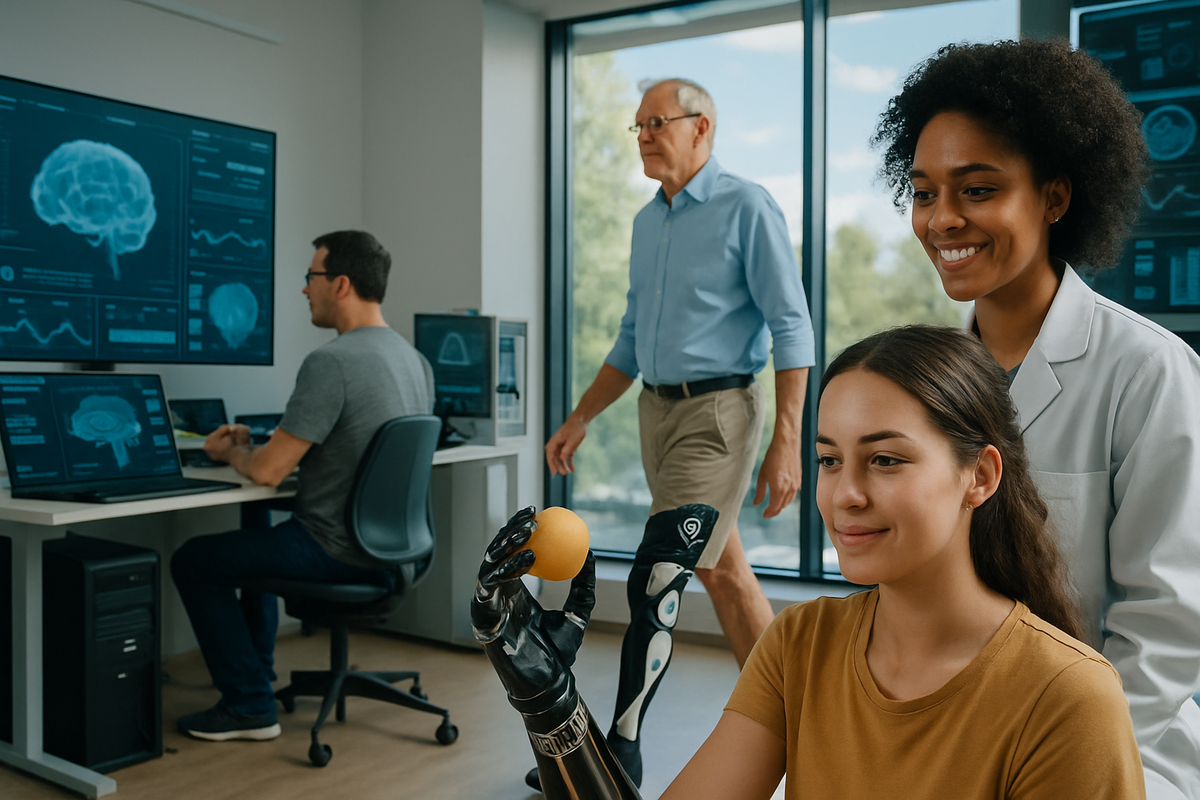Living Cyborgs: The Real-Life Revolution of Bionics in 2025
Explore how bionics are reshaping humanity by enhancing abilities beyond restoration, integrating AI, and redefining independence. Discover bionic hands that feel and cloud-connected limbs that learn—ushering in the age of living cyborgs.

Welcome to the Age of Living Cyborgs
If you think bionics is all comic-book bravado and Hollywood sparkle, think again. In 2025, the real-life revolution of bionics is rewriting what it means to be human—one neural impulse, cloud-connected limb, and self-powered implant at a time. And no, you don’t need a secret lair or a billionaire benefactor to join this movement. You just need a healthy dose of curiosity (and maybe a love for cool tech that borders on the superhuman).
“We’re not just restoring lost abilities—we’re expanding human potential. The new bionics are about living better, not just living normally.”
— Dr. A. Torres, Neurotechnology Researcher
Bionic Hands That Feel: From Sci-Fi to Sensation
Imagine reaching out with a robotic hand and feeling the difference between velvet and sandpaper. Thanks to a groundbreaking University of Chicago study, patients with spinal cord injuries are now doing exactly that—controlling bionic hands with their thoughts and actually feeling the world again. How? By implanting tiny electrodes in the sensory and motor regions of the brain, researchers have unlocked a new level of brain-computer interface (BCI) wizardry.
- Realistic Touch: Users can sense edges, shapes, and even subtle movements.
- Brain Zones: Overlapping regions in the brain are activated to evoke touch—think of it as a symphony of neurons, not a solo act.
- The Next Frontier: Synthetic skin sensitivity and proprioception (that’s your built-in GPS for limb position) are on the horizon.
Why it matters: For people with limb loss or paralysis, the return of touch isn’t just a technical feat; it’s a restoration of self, confidence, and independence.
Cloud-Connected Limbs: When Your Arm Gets Smarter Than Your Phone
Bionic limbs are getting a serious upgrade—thanks to the power of 5G and cloud computing. Forget clunky, laggy prosthetics. The new generation of smart limbs think fast and act faster, blending local processing, edge computing, and the cloud for seamless, natural control.
How Does It Work?
- Local Processors handle split-second, life-or-death moves (like catching a falling mug).
- Edge and Cloud Servers tackle the heavy thinking—recognizing gestures, learning preferences, and even predicting your next move.
- 5G Networks keep everything in sync, with blazing-fast, low-latency connections.
Proof in the pudding: Recent 5G testbeds have shown that cloud-connected bionic limbs can match the speed and precision of natural movement. That’s right—your prosthetic can now download updates as easily as your smartphone (but, please, no arm selfies just yet).
Wireless, Electronic-Free Implants: The Ultimate Low-Power Hack
What if your implant could sense, power itself, and transmit data—all without a single battery or circuit board? Enter the world of mechanical metamaterial implants, where nano energy harvesting meets wireless force sensing. These are not your grandparent’s pacemakers.
- Self-Powered: Implants generate electricity from mechanical movement (think: walking, bending, or even dancing the cha-cha).
- Wireless Transmission: Data is sent using the electricity harvested—no external power, no wires, no worries.
- Tested and Proven: These implants have already aced knee-replacement trials on cadaver specimens. Next stop: everyday life.
“This is the closest we’ve come to truly invisible, maintenance-free implants. The future is electronic-free—and incredibly smart.”
— Prof. J. Kim, Biomedical Engineer
Human Stories: More Than Just Titanium and Code
The greatest breakthroughs aren’t just in labs—they’re in lives. Meet Maya, who lost her hand in an accident but now drives, cooks, and writes poetry with her bionic hand that feels the world again. Or Sam, whose cloud-connected leg helps him run marathons—and beat his brother in the annual family sack race (sorry, bro!).
Behind every innovation is a real person, regaining not just mobility, but possibility.
The Road Ahead: Where Bionics Meets Bold Imagination
From restoring lost senses to redefining what our bodies can do, the bionic revolution is only getting started. As AI, cloud, and neurotechnology converge, expect prosthetics that learn with you, implants that heal as they sense, and perhaps even enhancements that let us experience the world in ways we’ve only dreamed.
Want to stay ahead of the curve?
Become a Funaix Insider for free and get the latest on bionics, AI, and the future of human potential—delivered straight to your inbox (no electrodes required).
Published: July 28, 2025
Categories: Wearable Tech, Medical Devices, Health & Wellness, AI & Robotics, Assistive Technology
Sources: University of Chicago Neurotechnology Study, arXiv.org (Bionic Limbs & Implants), MedTech Dive
For more in-depth tech stories, subscribe above and join our curious, future-facing community!




